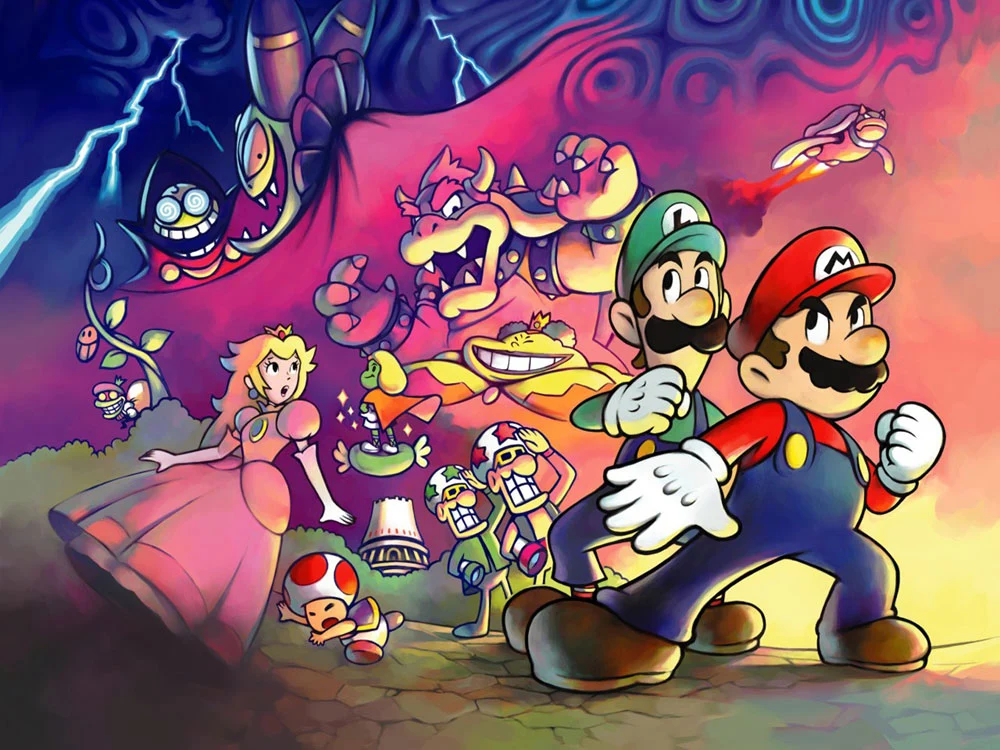The first great fight in Mario & Luigi: Superstar Saga is against the corrupted form of the matriarch Queen Bean. The brothers Mario have several offensive targets to select, her crowned head and her two gigantic, body-builder-caliber arms that pound the ground and send shockwaves that injure any plumber that doesn’t properly jump over it. Pouncing on her noggin’ awards you nothing more than damage thanks to those pointy golden spikes, so you quickly decide to avoid that strategy, choosing instead to deflate her arms to knock the thing off and reveal her soft skull underneath. In this dazed state, she takes full damage and hacks up beans that hatch into additional enemies if the timing of your jump is off by more than a few frames of animation and you crack one open.
Continue reading “The Design Of Mario & Luigi: The Lessons From A Superstar Saga”





